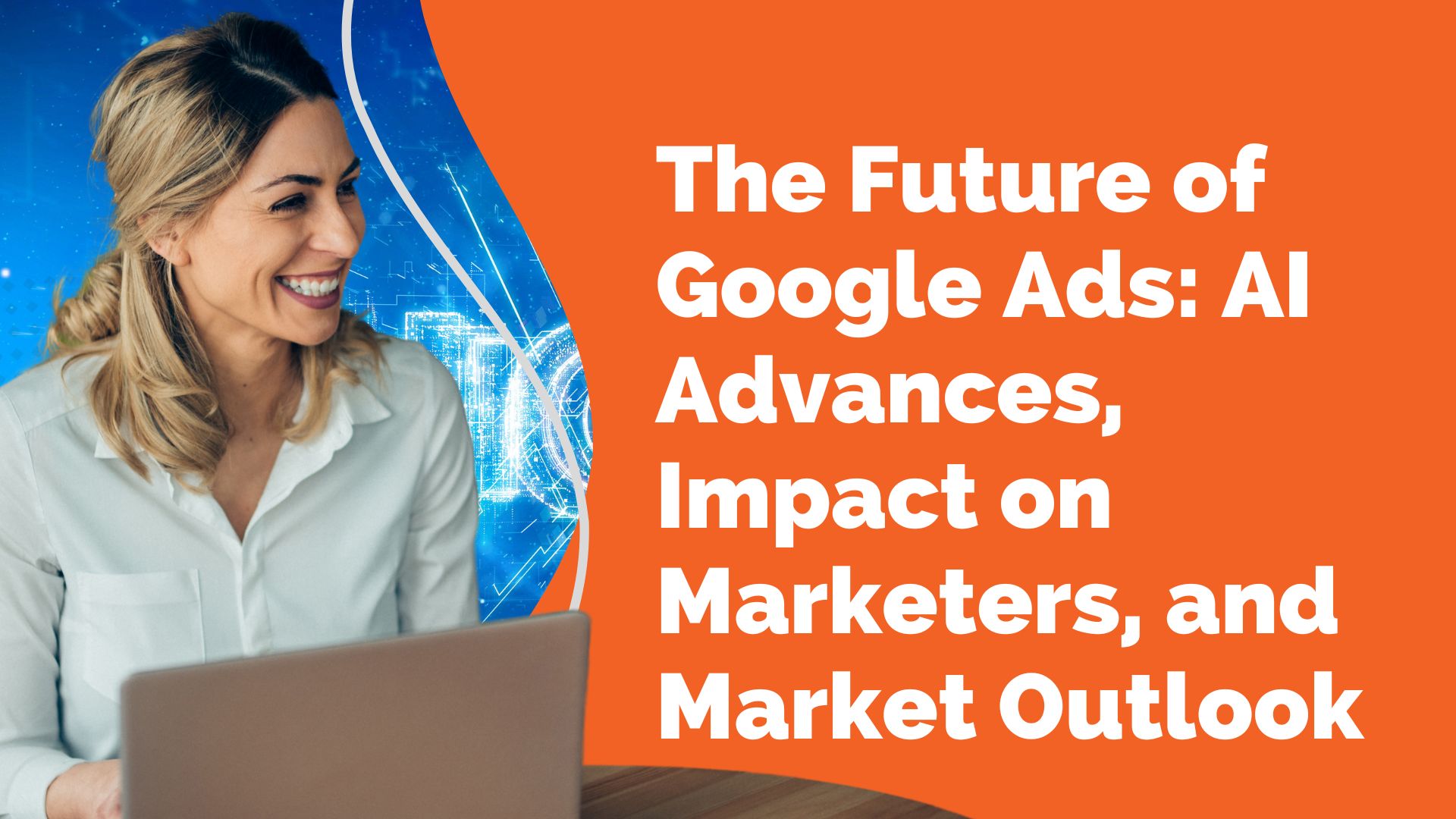Google Ads—formerly Google AdWords—has evolved into one of the most powerful advertising platforms for online retailers. Whether you’re a fledgling startup or a well-established e-commerce business, a strategic approach to Google Ads can help you reach new audiences, showcase your products effectively, and boost sales.
However, Google Ads can seem complex at first, especially if you’re juggling product feeds, bidding strategies, and evolving AI-driven campaign types. This comprehensive guide is designed specifically for online stores to demystify Google Ads and show you how to tap into its full potential.
We’ll walk you through everything from basic campaign setup to advanced optimization techniques. You’ll also learn how to dodge common pitfalls and leverage new AI-driven tools like Performance Max and Smart Bidding. Ready to leave your competition in the dust? Let’s dive in.
Consumers Are Always and Everywhere Open to Shopping
The anticipation of the holiday season no longer starts in December—it often kicks off as early as August. According to data from UnitedAds, 21% of German consumers begin thinking about holiday gifts late in the summer. Traditional milestones like Black Friday still hold strong appeal, with 65% of shoppers in 2021 citing Black Friday as a key part of their holiday shopping plans—a figure that climbed to 69% in 2022.
But the modern shopper doesn’t confine their buying journey to a single event or channel. Younger demographics (Gen Z and Millennials) are especially fluid, moving seamlessly between online and offline channels in search of deals, inspiration, and convenience. Retailers that stay visible and accessible year-round—across platforms—have the edge in influencing buying decisions whenever they arise.
Pro Tip (from UnitedAds):
Use AI-driven solutions like Performance Max and Smart Bidding to engage your target customers at the right time, place, and price. These tools help automate your campaigns using advanced machine learning, freeing you to focus on strategy rather than constant manual optimizations.
What Are Google Ads and Google Shopping?
Google Ads is Google’s central advertising platform. Advertisers bid on placements across Google’s search network, YouTube, partner websites, and more. With multiple formats (text, display, video, app campaigns), Google Ads offers vast opportunities to reach potential buyers.
Google Shopping is a specialized service within Google Ads. Instead of relying solely on text-based ads, online retailers upload a product feed to the Google Merchant Center, enabling product listings complete with images, prices, and store names. These listings appear directly in search results when shoppers look for related items.
Why Google Shopping Matters for Online Stores
- Massive Visibility: Google remains the world’s most-used search engine. Google Shopping spots bring your products front-and-center, complete with images and pricing details.
- High Purchase Intent: Users searching for specific products are often close to making a purchase decision, resulting in stronger conversion rates.
- Competitive Benchmarking: Without a presence on Google Shopping, your competitors could capture shoppers who might otherwise buy from you.
- Rich Visuals: Product images often perform better than plain text in driving clicks and conversions.
- Ease of Updates: Manage or refresh product data in the Merchant Center with relative ease—critical for promotions, seasonal inventory, or price changes.
Google Shopping Campaigns
Basics & Advantages
Google Shopping campaigns let you promote your product catalog directly in Google search results and the Shopping tab. Unlike text ads, these campaigns rely on your product feed—meaning your ads dynamically match user searches without requiring manual keyword lists.
Key Advantages
- Display product images, prices, store names
- Attract high-intent clicks from ready-to-buy shoppers
- Simplify management through bulk product feed updates
Creating & Structuring Shopping Campaigns
- Merchant Center Setup: Ensure you have an active Merchant Center account with a clean, optimized product feed.
- Google Ads Integration: Within Google Ads, create a new Shopping campaign, linking it to your Merchant Center.
- Targeting & Budget: Define daily budgets, bidding strategies, and target regions or languages.
- Product Groups: Organize your inventory within ad groups or product groups for detailed bidding and reporting.
Bidding Strategies & Budgeting
- Manual CPC: You set max bids yourself, granting full control.
- Enhanced CPC or Target ROAS/CPA: Google automatically adjusts bids to achieve a target ROAS or CPA.
- Performance Max: A newer option that uses AI to optimize across multiple Google channels—including Shopping, Display, YouTube, and more.
Start with a budget that aligns with your business goals, monitor performance closely, and make adjustments as needed.
Introduction to the Google Merchant Center
The Google Merchant Center is the hub where you manage your product feed. It links your online store’s inventory data to Google, enabling Shopping ads and other e-commerce features.
Setup & Linking with Google Ads
- Create a Merchant Center Account: Provide business details like name, address, and URL.
- Claim & Verify Website: Prove that you own the domain.
- Link to Google Ads: Seamlessly connect Merchant Center to your Google Ads account for campaign creation.
Product Feed Creation & Optimization
- Feed Formats: Options include Google Sheets, CSV, or direct API integrations.
- Critical Attributes: Product ID, Title, Description, Image Link, Price, Availability.
- Best Practices:
- Use clear, keyword-rich titles
- Upload high-resolution images
- Keep your feed regularly updated (especially for price/stock changes)
An optimized feed is essential for high-quality Shopping ads, ensuring shoppers see accurate, compelling information.
Google Search Ads for Online Stores
Search ads remain a staple for e-commerce. While Shopping ads spotlight individual products, Search ads let you tailor messages around broader topics like brand positioning, sales promotions, or even educational blog content.
Key Differences vs. Shopping Ads
- Search Ads: Keyword-driven text ads with custom headlines and descriptions.
- Shopping Ads: Auto-generated from a product feed, featuring images, titles, and pricing.
Keyword Research & Selection
- Use the Keyword Planner: Identify popular and relevant search terms.
- Balance Search Volume & Competition: Long-tail keywords may offer more affordable CPCs.
- Monitor & Refine: Continually track which keywords convert best and adjust your list accordingly.
Crafting Effective Ad Copy & Extensions
- Clear, Concise Messaging: Hook your audience in the first headline.
- Strong CTA: Encourage immediate action, e.g., “Buy Now” or “Get 20% Off.”
- Extensions: Add site links, call buttons, price listings, or location details. Extensions often increase click-through rate (CTR) and provide extra info at a glance.
Bidding Strategies for Search Ads
- Manual CPC: Full control but requires constant oversight.
- Smart Bidding: Automated strategies like Target CPA, Target ROAS, or Maximize Conversions.
- Bid Adjustments: Fine-tune bids by device, time, location, or even audience segments.
Optimizing Google Shopping Ads
Google Shopping Ads excel at connecting ready-to-buy customers with your catalog. Optimization is critical to stand out in a crowded marketplace.
Must-Have Elements in a High-Performing Shopping Ad
- High-Quality Images: Crisp, well-lit, and true to the product.
- Keyword-Rich Product Titles: Match user search queries (e.g., “Women’s Running Shoes – Brand Name”).
- Accurate Descriptions: Include essential details (sizes, materials, etc.) in a concise manner.
- Dynamic Pricing & Promotions: Regularly sync real-time pricing or highlight discounts.
Quality Score & Ad Rank
- Relevance: Ensure product titles and descriptions align with user queries.
- Competitive Bids: Bidding too low can hamper visibility, but watch your ROI.
- Landing Page Experience: Pages should load fast, be mobile-optimized, and show consistent info.
Pricing, Special Offers & CTAs
- Competitive Pricing: If your price is too high compared to similar ads, shoppers may ignore your listing.
- Promos & Deals: Highlight deals, coupons, or free shipping.
- Clear CTAs: Phrases like “Shop Now” or “Limited Time Offer” can boost click-through rates.
Google CSS (Comparison Shopping Services) Program
To encourage competition in Europe, Google launched the CSS (Comparison Shopping Services) program. Instead of listing products directly via Google Shopping, online stores can partner with third-party CSS providers to advertise.
Benefits of CSS for Online Retailers
- Potentially Lower CPCs: Some CSS providers may offer a more cost-effective route than direct Google Shopping.
- Expanded Reach: Appear on multiple comparison platforms.
- Specialized Services: CSS partners often tailor strategies for specific niches or markets.
Getting Started
- Research CSS Providers: Compare service fees and offerings.
- Register & Onboard: Sign up and integrate your product feed.
- Monitor Performance: Evaluate clicks, conversions, and CPCs compared to direct Shopping campaigns.
Advanced Shopping & Search Ad Features
Local Inventory Ads
Show in-store product availability to nearby customers. Great for driving foot traffic and bridging online-to-offline sales. Users click on your ad and see a local storefront page detailing stock levels, store hours, and directions.
Showcase Shopping Ads
Group related products under a single branded tile. Ideal for more generic search queries (e.g., “summer dresses”) where you want to give users a curated overview of your offerings.
Advanced Ad Extensions for Search Ads
- Location Extensions: Let shoppers see your nearest store address.
- Call Extensions: Encourage direct phone inquiries.
- Price Extensions: Showcase specific products or services with set prices.
- App Extensions: Link directly to your app download page.
Automated Bidding Strategies
Smart Bidding uses machine learning to optimize bids in real time based on user signals (device, location, time, browsing behavior). Some popular strategies include:
- Target CPA (Cost per Acquisition)
- Target ROAS (Return on Ad Spend)
- Maximize Conversions
- Maximize Conversion Value
Automation can free up time and yield better results, though it’s wise to keep an eye on performance to make sure AI-driven bids align with your profitability goals.
Measuring & Analyzing Google Ads for Online Stores
Constant measurement is essential to gauge which campaigns work—and which don’t.
Key Metrics
- CTR (Click-Through Rate): The percentage of ad impressions that result in clicks. A higher CTR often indicates strong relevance.
- CPC (Cost per Click): How much you pay for each click. Lower CPCs can suggest efficient targeting.
- ROAS (Return on Ad Spend): Revenue generated for each dollar spent. Aim for a ROAS above 1.0 to ensure profitability.
Merchant Center & Google Ads Dashboard
- Product Feed Health: Monitor errors or warnings in your feed—missing data or disapproved items can hurt performance.
- Performance Reports: Access impressions, clicks, costs, and conversions at the product level.
- Optimization Ideas: Google’s recommendations can point out missed opportunities or misconfigured settings.
Integration with Google Analytics
- Deeper Insights: Linking Google Ads and Analytics reveals post-click behavior, such as bounce rates or session duration.
- E-Commerce Tracking: Track exact sales figures, average order values, and product performance to refine campaigns.
- Audience Creation: Build remarketing lists or segment your audience based on browsing behavior.
Social Shopping Influences Purchases—Digitally and In-Store
Post-pandemic, many customers are returning to physical stores yet still rely on digital research to inform their choices. In particular, 42% of shoppers check online availability before going to the store. Gen Z consumers often consult YouTube for product demos and reviews, underscoring the power of video content in driving purchase decisions.
Retailers’ Opportunity:
- Use local inventory ads to highlight in-stock items.
- Provide authentic videos or influencer collaborations for product showcases.
- Maintain accurate online listings so shoppers know exactly what to expect in-store.
Conclusion
Google Ads isn’t just a place to bid on keywords—it’s a dynamic ecosystem bridging search, shopping, display, video, and more. For online stores, mastering the fundamentals of Google Shopping and advanced campaign types like Performance Max can unlock significant growth and profitability.
By strategically blending Shopping and Search campaigns, optimizing product feeds, and harnessing AI-driven bidding, you can reach customers at every stage of the purchase journey—from early inspiration to final checkout.
Stay proactive about monitoring key metrics, refining campaigns, and adapting to shifting consumer behaviors. With the right data and strategies, you’ll be well-positioned to thrive in today’s ever-competitive e-commerce landscape.
Remember: the real power of Google Ads lies in continuous experimentation and data-driven optimization. Don’t be afraid to test new features, tweak your approach, and iterate until you find what works best. Good luck!







